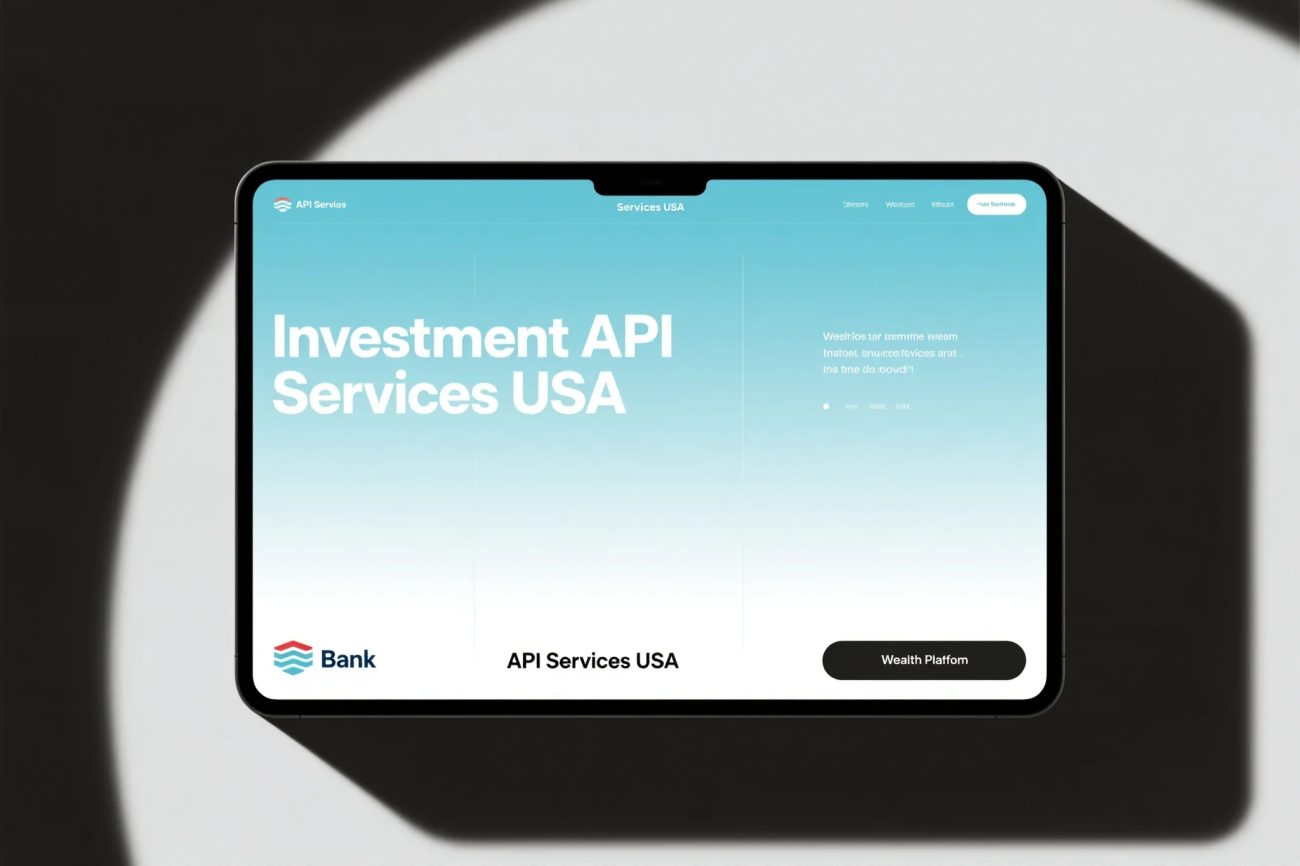Investment API Services USA: Connecting Banks & Wealth Platforms
The financial services landscape in the United States has been transformed by the rapid adoption of investment API services USA, creating seamless connectivity between traditional banking institutions and next-generation wealth management platforms. These sophisticated application programming interfaces enable secure, real-time data exchange and transaction capabilities that
power modern financial ecosystems, allowing institutions to offer integrated investment experiences without building proprietary infrastructure from scratch. The evolution of investment APIs reflects broader trends in financial technology innovation, where open architecture and interoperability are becoming competitive necessities rather than differentiators, as both established financial institutions and fintech startups recognize the value of connected financial ecosystems that can adapt to changing customer expectations and regulatory requirements. Professional financial technology architects are designing increasingly sophisticated API frameworks that balance security requirements with developer accessibility, creating standardized interfaces for account aggregation, portfolio analytics, trade execution, and performance reporting that can be customized to meet the specific needs of diverse financial institutions and their clients.Embedded Finance Platforms Revolutionizing SMB Financial Services
The integration of embedded finance platforms for SMBs with investment API services is creating new opportunities for small and medium-sized businesses to access sophisticated financial tools that were previously available only to large corporations or wealthy individuals. These platforms embed investment management, banking, and payment capabilities directly into business software applications, enabling SMBs to manage cash flow, optimize working capital, and plan for long-term growth through
interfaces that integrate seamlessly with their existing operational workflows. The technological infrastructure supporting embedded finance solutions combines investment APIs with banking-as-a-service platforms and payment processing networks, creating comprehensive financial ecosystems that can be white-labeled or customized to match the branding and user experience requirements of various software providers serving the SMB market. Professional financial advisors serving small business clients are increasingly recommending embedded finance solutions that incorporate investment API connectivity, as these platforms provide SMB owners with consolidated financial visibility and control while reducing administrative overhead associated with managing multiple financial relationships through disparate interfaces. The competitive landscape for embedded finance platforms continues to evolve as traditional financial institutions partner with fintech providers to extend their reach into the SMB market, while specialized technology firms develop vertically integrated solutions tailored to specific industries or business models that require customized financial functionality beyond what generic platforms can provide.Private Banking Services Adapting to API-Driven Innovation
The modernization of private banking services USA through investment API integration is enabling high-touch wealth management firms to enhance their value propositions with technological capabilities that meet the evolving expectations of affluent clients accustomed to seamless digital experiences. Private banks are leveraging APIs to connect their proprietary platforms with external investment managers, alternative asset platforms, and specialized financial tools, creating curated financial ecosystems that combine institutional-grade investment management with personalized service models tailored to each client's unique needs and preferences. The technological implementation of API connectivity in private banking environments emphasizes enterprise-grade security protocols, granular permission controls, and comprehensive audit trails that meet the rigorous compliance requirements of high-net-worth clientele and institutional investors. Professional relationship managers at private banks are utilizing API-connected platforms to provide clients with real-time portfolio visibility across held-away assets, sophisticated performance attribution analytics, and consolidated reporting that simplifies complex financial situations while maintaining appropriate data privacy and security standards. The competitive differentiation of API-enhanced private banking services increasingly depends on the depth of integration between technological capabilities and human expertise, as affluent clients value both the efficiency of digital platforms and the nuanced judgment of experienced financial professionals who can interpret data insights in the context of each client's complete financial picture and long-term objectives.

Fintech Tax Automation Streamlining High-Income Financial Management
The convergence of fintech tax automation USA solutions with investment API services is creating powerful tools for high-income individuals and financial advisors to optimize after-tax investment returns while maintaining compliance with complex and frequently changing tax regulations. These integrated platforms automatically track cost basis, calculate realized and unrealized gains, identify tax-loss harvesting opportunities, and generate tax-efficient withdrawal strategies across entire portfolios rather than individual accounts, providing comprehensive tax optimization that adapts to each investor's specific tax circumstances and financial objectives. The technological architecture of advanced tax automation platforms combines investment API connectivity with sophisticated algorithms that analyze tax implications across multiple dimensions including ordinary income rates, capital gains brackets, state tax considerations, and potential alternative minimum tax exposure, enabling personalized recommendations that maximize after-tax wealth accumulation. Professional tax advisors are increasingly incorporating API-connected tax automation tools into their practices, as these solutions enhance efficiency by reducing manual data entry errors, providing real-time visibility into tax consequences of potential transactions, and generating audit-ready documentation that simplifies compliance processes for both advisors and their clients. The regulatory environment for tax automation services continues to evolve as tax authorities develop guidelines for digital tax reporting and verification, requiring solution providers to maintain rigorous compliance frameworks that ensure accuracy and accountability while preserving the user experience advantages that make these tools valuable to time-constrained professionals and high-net-worth individuals.
Open Banking APIs Creating Connected Financial Ecosystems
The proliferation of open banking APIs USA standards is accelerating the development of interconnected financial ecosystems that combine banking, investment, lending, and payment services through secure data sharing frameworks that prioritize consumer protection and privacy. These API standards enable authorized financial applications to access customer-permitted account data across multiple institutions, providing consumers and businesses with comprehensive financial visibility and control through unified interfaces that can aggregate, analyze, and act on financial information in real time. The technological implementation of open banking APIs emphasizes security through OAuth authentication protocols, data encryption, and granular permission controls that allow customers to specify exactly what information can be shared and for how long, creating trust frameworks that balance convenience with appropriate safeguards for sensitive financial data. Professional financial planners are leveraging open banking API connectivity to provide clients with holistic financial advice based on complete pictures of their financial situations, including held-away assets that might otherwise be overlooked in traditional planning processes, while maintaining compliance with fiduciary standards that require advisors to consider all relevant financial information when making recommendations. The regulatory framework for open banking in the United States continues to develop through a combination of industry-led initiatives and government oversight, with policymakers seeking to encourage innovation and competition while ensuring that consumer protections keep pace with technological advancements in financial data sharing and aggregation.
